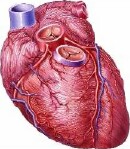
WEDNESDAY, July 21 (HealthDay News) — A two-step procedure that uses nanoparticles to first scrub plaque out of arteries and then inserts stem cells to promote healing of those arteries may one day help individuals with atherosclerosis, new research suggests.
“One of the problems of removing plaque [with current methods such as angioplasty] is that there is damage to the underlying wall,” explained Dr. Edward A. Fisher, director of the Center for the Prevention of Cardiovascular Disease at NYU Langone Medical Center, in New York City, who was not involved with the research. “The rate of restenosis [when the vessel closes over again] is very high.”
This new technique, performed only in pigs so far, would circumvent that problem with this “somewhat provocative ability to heal the vessel wall by administering stem cells after you injure the vessels,” Fisher said. “If this were true in people, it could be an option for the future.”
The research, conducted by Russian scientists, was presented Tuesday at the American Heart Association’s Basic Cardiovascular Sciences — Technological and Conceptual Advances in Cardiovascular Disease meeting, in Rancho Mirage, Calif.
Nineteen pigs were divided into three groups, all receiving tiny nanoparticles either with or without stem cells (the stem cells were also delivered in one of two different ways). A second set of 18 pigs received salt water instead of nanoparticles.
The nanoparticles were delivered directly into the pigs’ hearts, then heated with lasers to clear out the accumulated plaque, a procedure referred to as “nanoburning.”
Six months after the procedure, plaque volume was reduced an average of 56.8 percent in the pigs receiving nanoparticles vs. an increase of 4.3 percent in the control group.
Pigs who had received both nanoparticles and stem cells showed the greatest improvements, along with signs of artery healing, the study authors found.
Three of the pigs who received nanoparticles delivered by microbubbles (as opposed to intracellularly or with a patch attached to the heart) experienced blood clots, the researchers reported.
Right now, drug-eluting stents appear to be quite successful in treating atherosclerosis, said Fisher, but the new technique might one day be helpful in two particular subgroups: People who form clots after receiving a drug-eluting stent and who now require long-term anti-platelet therapy, and diabetic patients who are difficult to treat with angioplasty and stenting.
However, studies with animals that show promise don’t always guarantee that the benefits will be seen in humans.
The Ural State Medical Academy in Yekaterinburg, Russian Federation, funded the study, with help from private investors.
A second study, from German researchers, used stem cells to heal tissue after a heart attack, although that research, Fisher said, “is a few steps more removed from clinical practice [than the nanoparticle study].”
Thirty rats were outfitted with miniature plastic scaffolds coated with stem cells engineered to overexpress different types of cytokines. Cytokines are cells produced by the immune system that facilitate communication between cells.
Other rats were given a cytokine-related gene and still others received stem cells without the scaffolding.
Rats who were implanted with scaffolding plus genetically modified stem cells saw greater improvements in blood pressure function than those in the control group, according to the report by Dr. Matthias Siepe, assistant professor and staff surgeon at the department of cardiovascular surgery, Medical University Center in Freiburg, Germany, and colleagues.
Both trials are preliminary, though, noted Dr. Darwin J. Prockop, director of the Texas A&M Health Science Center College of Medicine Institute for Regenerative Medicine at Scott & White in Temple, the Stearman Chair in Genomic Medicine and a professor of molecular and cellular medicine in the College of Medicine.
“Other clinical trials [into using stem cells for heart repair] are going on, but how well they’re doing I don’t quite know and the basis for understanding how they work is still not quite there,” he said.
More information
For more on using stem cells to repair a damaged heart, visit the U.S. National Institutes of Health.

